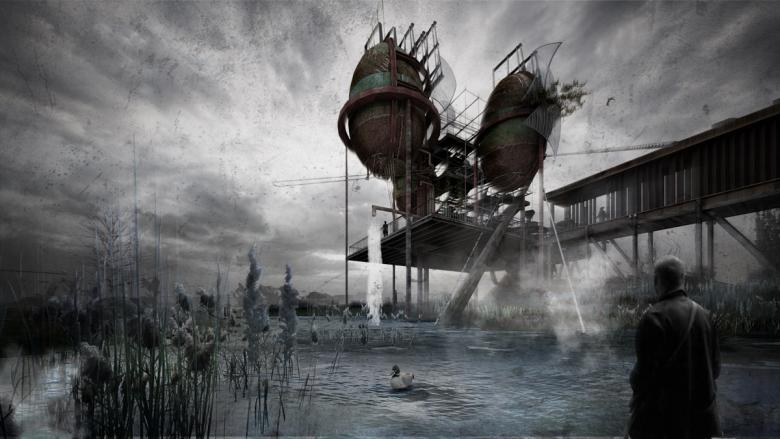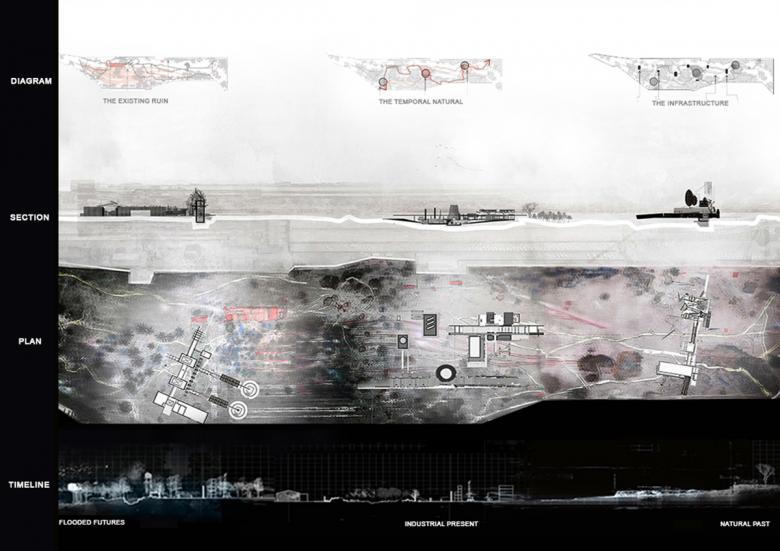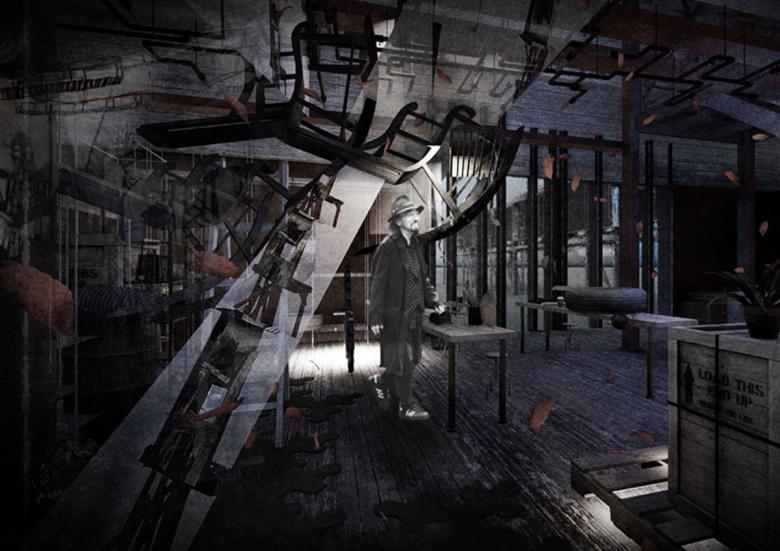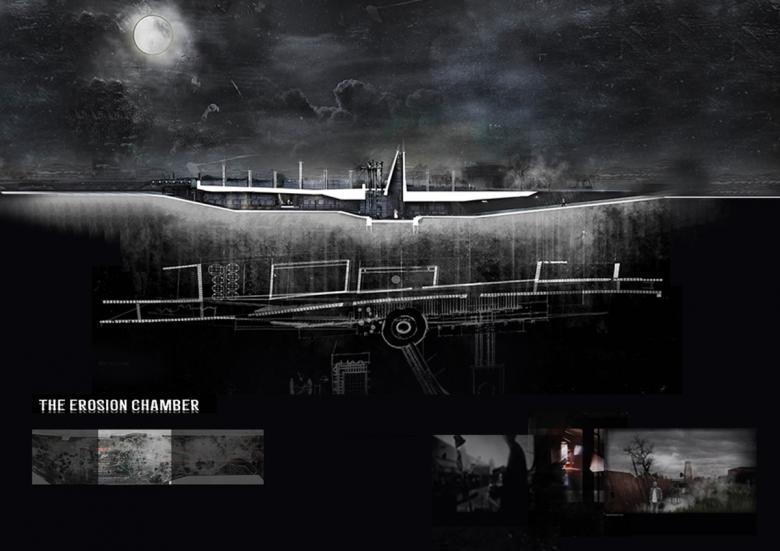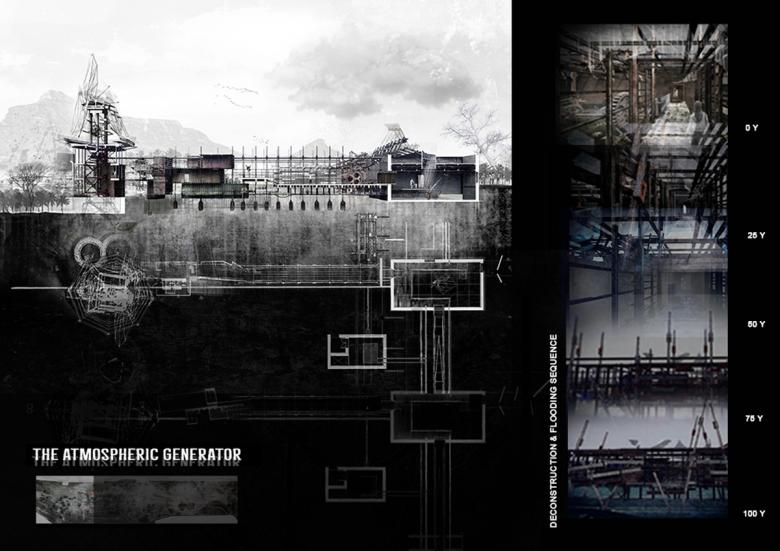
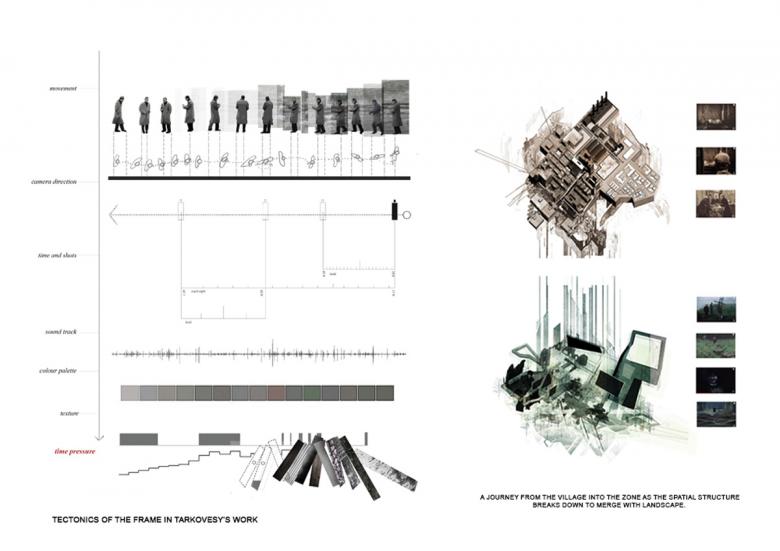
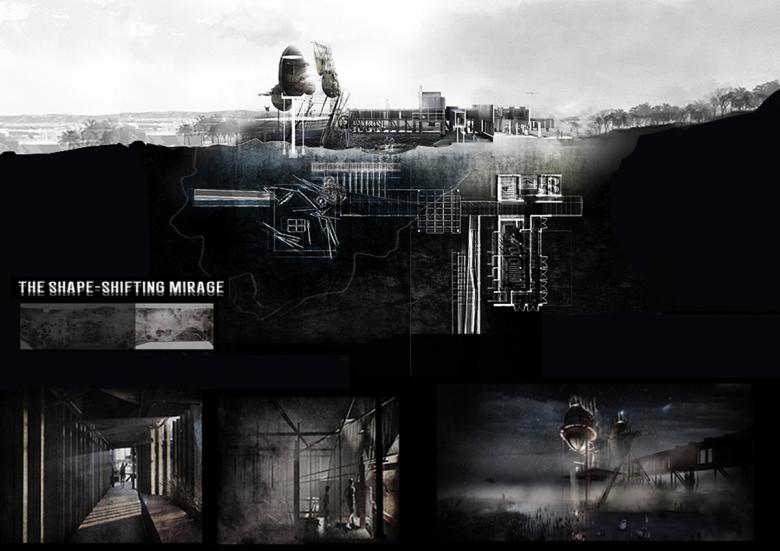
Open: Montage, Collage and Bricolage in Making Tarkovsky’S Zone
プロジェクト一覧に戻るProject Location
Cape Town, South Africa
Topic
Utopia
Formal Experimentation, New Ways of Living
Program
Culture
Exhibition, Nature
Sculpting a cinematic narrative space in a liminal landscape
The research drew parallels between Tarkoveys’ cinematic Zone, the perceptual Zone of the current Covid-19 reality and the physical site containing the marginal Salt-river Zone. The inquiry engaged these Zones to discover an alternative way to represent and experience the architectural project through time in tune with the natural environment.
In architecture, there is often a preoccupation with the final product over its creative process. The Covid-19 pandemic has transformed the world into an unknown, projecting a liminal state of indeterminacy. So this study in the context of the world during the pandemic presents the opportunity to re-evaluate architectural praxis by challenging prescribed methods of design while challenging the current notions about architecture concerning its environment. This study explores how innovative design methods inspired by the study of film can inform the making of poetic and phenomenologically enriched architecture which links various realities and time-based experiences in tune with landscape.
Both the disciplines of cinema and architecture can incite triggers in individuals that can result in a meaningful experience of our human existence. Director Andrei Tarkovsky’s films are among the most celebrated ‘sculptures’ of time-based poetics in the cinematic arts. This research is inspired explicitly by Tarkovsky’s depictions of the Zone in his 1979 film Stalker, where he uses narrative techniques to encourage an understanding of our existence in landscape. The methods of montage, bricolage and collage, all emphasise the process (making) as much as the product (architecture). Using these techniques, this project employs a fragmented approach to communicate the atmosphere and trace of a place, both fictional and physical. This is achieved by adopting the role of the bricoleur who engages in a series of phenomenological experiments which transverse the chosen site through its past, present and future conditions. In the particular context of global climatic concerns, there is arguably a detachment between society and its physical environment. In this study, Tarkovey’s Zone serves as a lens to explore this disconnection. The project grounds itself in reality through the physical Salt River Zone located on the fringes of Cape Town’s inner city. Presently this area is under developmental threat which would disregard its hidden environmental and industrial history. Once an estuary and now in ruin, this site mirrors Tarkovsky’s filmic Zone, in its derelict state of ‘in-between’ where nature has endured. The architectural proposition manifested in the making of an artistic public park which layers moments of experiential encounter, environmental remediation, and participatory creation to connect citizens to this forgotten landscape. Three interventions supported by a route perform specific on-site processes in a mechanised way echoing the site's industrial past while regenerating the site's environmental woes and thus connecting citizens to the past and present through ecological experience.
